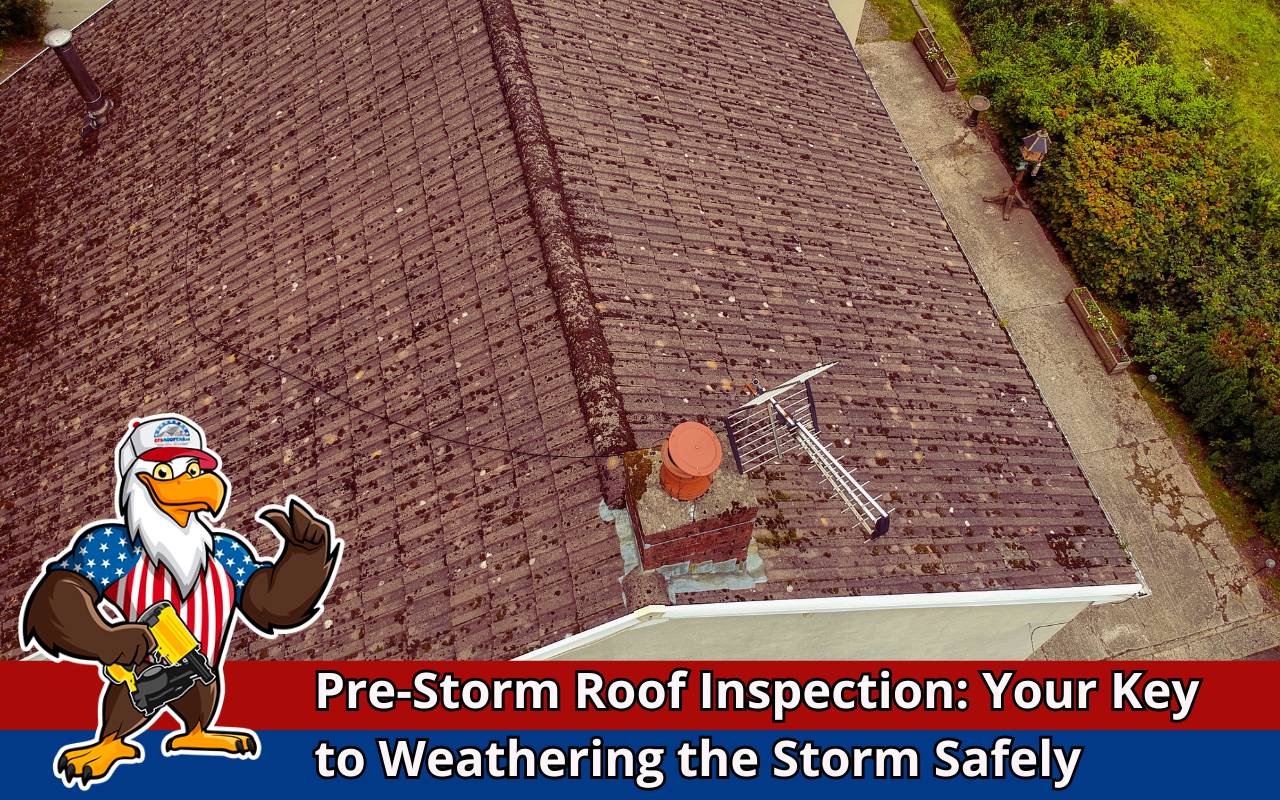
As dark clouds gather, preparation is essential. Among the most overlooked steps is evaluating your roof’s condition. Conducting a pre-storm roof inspection ensures your home stands ready against severe weather. Even a missing shingle can trigger costly leaks and damage. Preparation is more than protection; it provides peace of mind.
Studies show roofs inspected before storms are 40% less likely to suffer severe damage. This statistic highlights the importance of foresight. By scheduling a pre-storm roof inspection, you safeguard both your property and loved ones. It is an investment in resilience that helps homeowners face storms with confidence.
Importance of Pre-Storm Roof Inspections
A thorough inspection reduces risks before severe weather arrives. By checking shingles, flashing, and gutters, vulnerabilities are identified and repaired early. Transitioning from reactive to proactive maintenance strengthens your roof’s defense. Addressing issues ahead of time lowers repair costs and avoids post-storm stress.
Additionally, a documented inspection simplifies insurance claims. Insurers value proof of prior maintenance when assessing damage reports. Choosing a pre-storm roof inspection demonstrates responsibility and protects your finances while ensuring peace of mind.
Signs of Roof Damage to Look For
- Missing or curling shingles that weaken waterproofing.
- Rust stains or cracked sealant around vents and chimneys.
- Clogged gutters that disrupt water flow and protection.
Dark streaks or algae also signal moisture buildup and deteriorating materials. Spotting these issues during your pre-storm roof inspection prevents extensive future damage.
DIY Pre-Storm Roof Inspection Checklist
- Gather tools: ladder, gloves, flashlight, and binoculars.
- Check shingles, soffits, and fascia boards for visible wear.
- Inspect flashing around vents and chimneys for cracks.
Finish by checking attic insulation for water damage signs. A systematic checklist transforms a daunting task into an easy routine. With careful planning, your pre-storm roof inspection covers every critical area.
Hiring a Professional Roof Inspector
DIY methods help, but professionals provide deeper insights. Certified inspectors use thermal imaging and moisture sensors for hidden issues. Their expertise ensures no damage goes unnoticed. Always confirm licensing and certifications before hiring.
A professional pre-storm roof inspection also creates valuable documentation for insurance claims. This official record speeds claim processing, reducing stress after severe weather.
Repairing Minor Roof Issues Before the Storm Hits
Quickly addressing small repairs prevents larger disasters. Replace damaged shingles and reseal edges with roofing cement. Clear and secure gutters to maintain proper drainage. Patching roof membranes with waterproof materials also extends durability.
By handling these small tasks during your pre-storm roof inspection, you protect your home from costly water intrusion.
Reinforcing Your Roof for Extra Protection
- Install hurricane straps to improve wind resistance.
- Upgrade to impact-resistant shingles or protective coatings.
- Reinforce attic ventilation with storm-resistant systems.
These reinforcements enhance storm resilience and provide homeowners with stronger peace of mind.
Emergency Roof Tarping: What You Need to Know
Even after preparation, emergencies may arise. Having tarps ready allows quick responses. Secure a UV-resistant tarp over damaged areas with nails and washers. Always place underlayment beneath the tarp to prevent condensation buildup.
This temporary fix buys valuable time until permanent repairs are completed after the storm passes.
Insurance Coverage for Storm-Damaged Roofs
Insurance policies differ, so review them before storm season. Many cover wind and hail but vary in deductibles. A documented pre-storm roof inspection strengthens your case and supports faster claims.
Always photograph damage and maintain written records. These actions protect your rights while ensuring fair compensation.
Frequently Asked Questions (FAQs)
How often should I schedule a pre-storm roof inspection?
Experts recommend scheduling at least once yearly, preferably before storm season begins.
Can I perform a pre-storm roof inspection myself?
Yes, but combining DIY methods with professional inspections ensures a more comprehensive evaluation.
What tools are useful for a DIY inspection?
Binoculars, gloves, a ladder, flashlight, and a moisture meter provide thorough inspection support.
Will a pre-storm inspection affect insurance claims?
Absolutely. Documented inspections often expedite claims and reduce disputes with adjusters.
Where can I find reliable roofing services?
You can visit our contact page to connect with certified roofers.
Post-Storm Roof Inspection and Damage Assessment
After storms, inspect your roof for new issues. Photograph shingles, flashing, and ceilings. Compare findings with earlier reports to track new damage. If necessary, contact a professional for restoration planning.
Ensuring Your Roof’s Resilience
Making a pre-storm roof inspection part of your preparation routine reduces damage risks. From DIY steps to professional services, each measure reinforces resilience. Take proactive action today through our roofing services and face storms with confidence.
